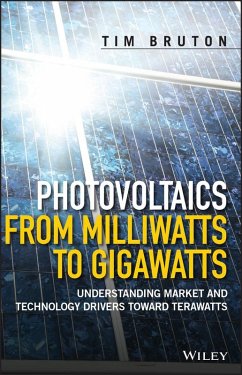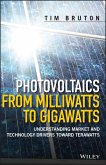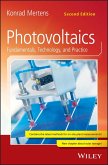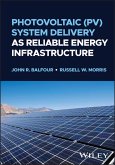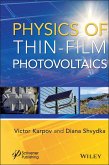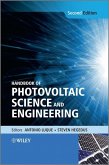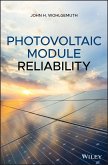An essential guide through the rapid evolution of PV technology
Photovoltaics from Milliwatts to Gigawatts: Understanding Market and Technology Drivers toward Terawatts covers the history of silicon based PV, from the earliest discoveries to present and future practice.
Divided into 9 chapters, the book includes the following topics: Early History; The 1973 Oil crisis and the drive for alternative energies; The emergence in the 1980's of the off grid PV market, the significant small scale PV consumer market and the establishment of a manufacturing industry; Advantages of silicon for solar cells; The evolution of PV installations; The history of the incentive programme for PV; Difficulties of alternative technologies in challenging silicon dominance; Current status of the silicon manufacturing technology and The future.
Key features:
An essential PV guide aimed at researchers and students in electrical engineering and physical sciences through the rapid evolution of PV technology to commercial viability and the challenges ahead for increased performance, efficiency and global deployment.
Photovoltaics from Milliwatts to Gigawatts: Understanding Market and Technology Drivers toward Terawatts covers the history of silicon based PV, from the earliest discoveries to present and future practice.
Divided into 9 chapters, the book includes the following topics: Early History; The 1973 Oil crisis and the drive for alternative energies; The emergence in the 1980's of the off grid PV market, the significant small scale PV consumer market and the establishment of a manufacturing industry; Advantages of silicon for solar cells; The evolution of PV installations; The history of the incentive programme for PV; Difficulties of alternative technologies in challenging silicon dominance; Current status of the silicon manufacturing technology and The future.
Key features:
- An authoritative first-hand account of an emerging technology from laboratory to global significance for electricity generation by an industry expert.
- Provides a framework for policy makers on future trends in the PV industry.
- Examines the lessons learnt from the interaction of research laboratories, major industry and government.
- Signposts the route to future high efficiency silicon solar cells giving new researchers a background for further development.
- Highlights the critical success factors for the emerging alternative manufacturing technologies.
An essential PV guide aimed at researchers and students in electrical engineering and physical sciences through the rapid evolution of PV technology to commercial viability and the challenges ahead for increased performance, efficiency and global deployment.
Dieser Download kann aus rechtlichen Gründen nur mit Rechnungsadresse in D ausgeliefert werden.

